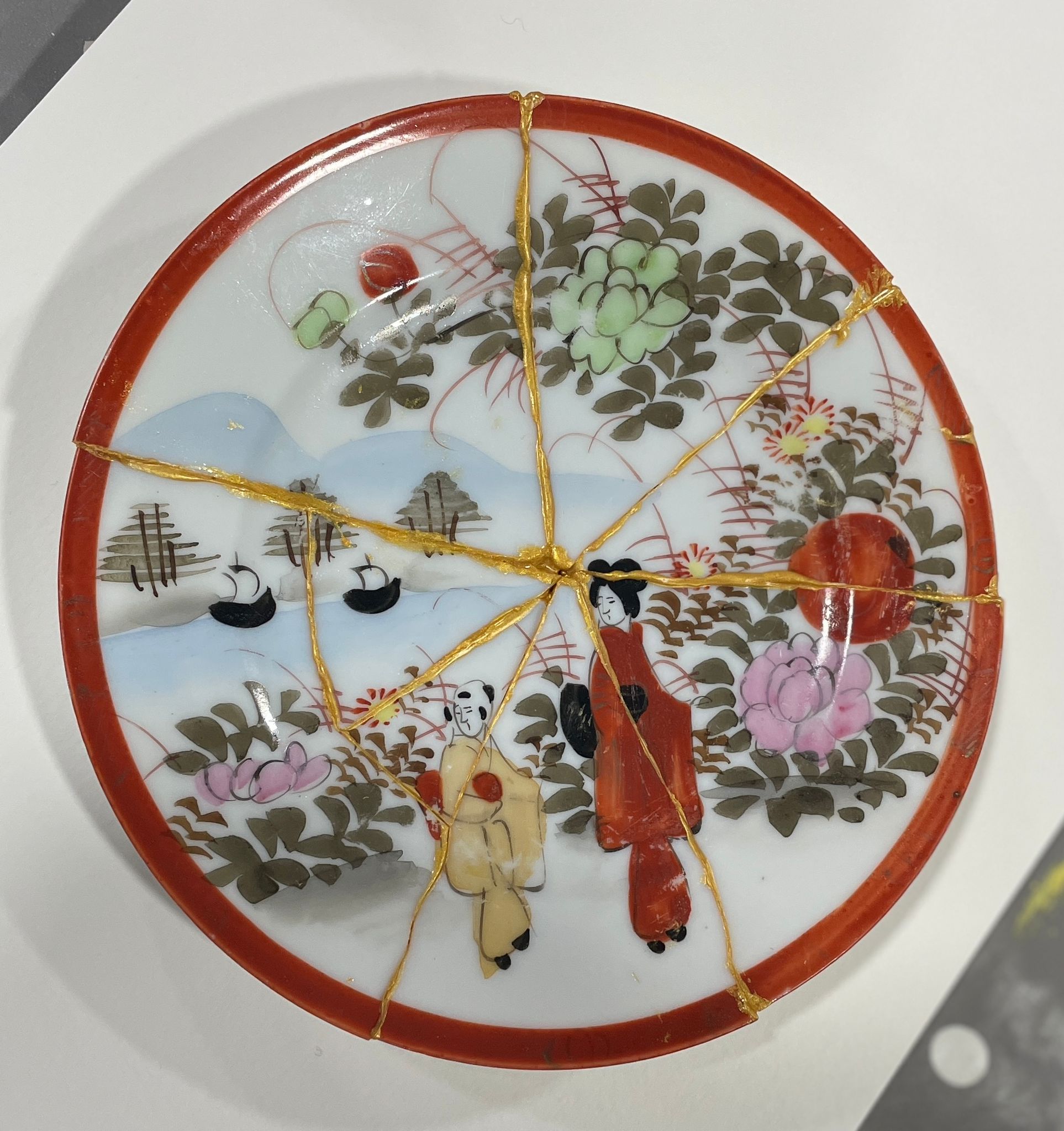In a world of mass-produced furniture and minimalist home décor, it’s easy to fall into the trap of a home that feels beautiful but lacks personality. We are so focused on achieving a clean, perfect look that we often forget the most important part of a home: the stories it tells. Kintsugi-repaired pieces are the perfect antidote to this. They are not just objects; they are a powerful statement that a home is a collection of memories and history, not just new, flawless things. This guide will show you how to take a once-broken object and turn it into a beautiful statement piece that adds warmth and a rich, personal story to your home.
The New Definition of Perfection: Flaws as Features
The core of Kintsugi challenges our very notion of what makes something beautiful. We are conditioned to believe that new and flawless is always better. But a home filled with only brand-new, perfect items can feel cold and sterile. A Kintsugi-repaired piece, with its visible golden veins, tells a story of survival and transformation. It argues that the breaks and imperfections are what make a piece truly unique and beautiful. When you display a Kintsugi piece, you are making a critical statement: that a home is a place where every object is cherished, regardless of its past. The goal is not to hide the repair but to showcase it as a badge of honour, a testament to resilience. —
Styling Your Kintsugi Piece: It’s About the Story
Once your piece is repaired, you want to display it in a way that honours its new story. Think of it as a conversation starter, not a flaw to be hidden. Here are a few ways to style your piece to make it the star of the show.
1. Create a Focal Point
A Kintsugi-repaired vase or bowl should be treated as a piece of art. Place it on a mantelpiece, a prominent bookshelf, or a side table where it can be seen and admired. Give it some space around it so that the eye is drawn to its unique beauty. Avoid cluttering the area with too many other objects. A minimalist display allows the gold lines to truly pop and become the centre of attention. You want people to ask about it, not overlook it.
2. Group with Other Objects of History
You can create a beautiful story by grouping your Kintsugi piece with other objects that hold history. Place it next to a stack of vintage books, a family photograph, or a treasured antique. This creates a cohesive narrative that tells the story of your home and the journey of the objects within it. It’s about creating a collection of things that have lived a life and hold a personal history, which makes a home feel incredibly warm and authentic.
3. Use It as a Statement Tray
For a beautiful and functional display, you can use a Kintsugi-repaired bowl or tray to hold other items. Place a few small candles in it, or use it to hold your keys and wallet on a sideboard. The gold veins will add a beautiful and unexpected touch of elegance to an otherwise mundane task, and it will be a constant reminder of the beauty that can come from repair. —
Kintsugi for Every Room
You can add a touch of Kintsugi’s philosophy to every room in your home. It’s a versatile art form that can transform everyday items into unique pieces of décor. A quick, critical note: modern Kintsugi repairs using epoxy are not food-safe, so make sure any repaired plates or mugs are used for display only.
- In the Living Room: A repaired vase can be a stunning centrepiece on a coffee table or a mantelpiece. A small repaired sculpture or decorative bowl can add a unique focal point to a bookshelf or a display cabinet.
- In the Bedroom: Use a repaired trinket dish to hold your jewellery or a small lamp base to add a touch of personality to a bedside table.
- In the Kitchen: A repaired mug can be used to hold pens on your desk or cooking utensils on the counter. A repaired plate can be hung on the wall as a piece of art.
- In the Home Office: A repaired paperweight or pen holder can be a constant source of inspiration, a reminder that your failures and struggles can be transformed into something beautiful and strong.
A home isn’t a museum; it’s a living, breathing space filled with memories, laughter, and a little bit of beautiful chaos. By incorporating Kintsugi-repaired pieces into your home, you’re not just adding décor; you’re adding a story. You’re making a statement that a home is a place where history is cherished, flaws are celebrated, and beauty is found in the imperfections. It’s a powerful way to create a space that feels personal, authentic, and truly your own.

No responses yet